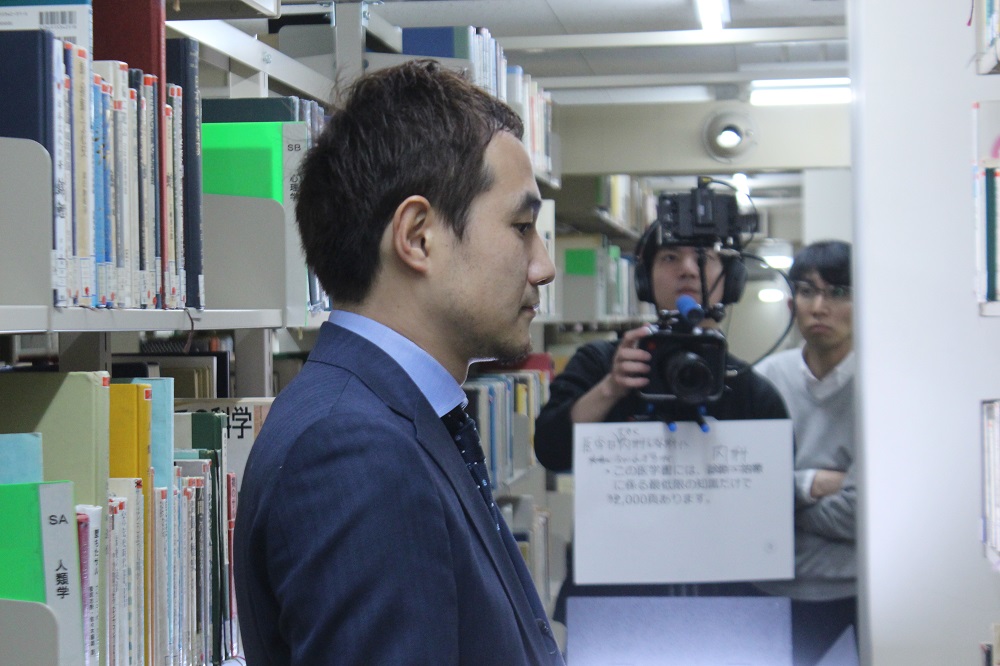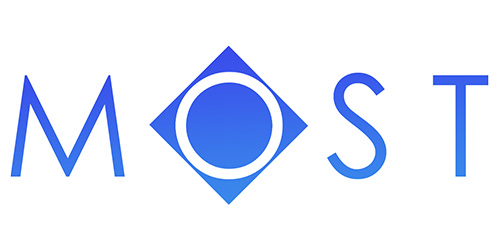Effective Uses of ICT in Teaching & Learning
- Here you will get to know about ICT* tools and platforms that are useful for your classes. You may find effective ways to use them in order to improve your classes and contribute to students’ learning.
- To use ICT for your classes effectively, please refer to “ICT Tools for Your Classes.”
- Digitizing materials for distribution to your students / grading quizzes more efficiently / sending an e-mail announcement to all of your students
→Learning Management System (LMS)
- Making face-to-face lectures more interactive by using video materials outside class → Flipped Classroom
- Utilizing a variety of online learning support systems in and out of class → BYOD
- Japanese and international case studies on the ICT-enabled education → Links on Educational Use of ICT
- Please visit CONNECT to find various information on education and learning utilizing ICT at Kyoto University.
- If you want to disseminate your online course in English globally, or if you want to gain an overview of such initiatives, please see “MOOC”
- If you want to disseminate videos of your classes, international conferences, research findings or the like through Kyoto University OpenCourseWare (OCW) within and beyond Japan, please see “OCW.”
- If you want to simply showcase your classes or your initiatives, ideas, and strategies for improving teaching on the Internet, or if you want to know more about initiatives for improving teaching pursued by university faculty members all over Japan and educational enhancement programs such as faculty development, please see “Educational Practice Support System (MOST).”
* ICT: Information and Communication Technology
ICT Tools for Classroom
You can use Kyoto University’s ICT environments, commercial tools, online services, etc. as much as you want!
Learning Management System (LMS) (For in-campus only)

- An LMS is an online environment to support day-to-day teaching and learning activities within a specific course. It integrates a variety of teaching and learning support tools and can be used for purposes such as sharing course-related resources (instructional materials and handouts), collecting and grading submissions, and posting announcements on bulletin boards and mailing lists.
- The Institute for Information Management and Communication (IIMC) provides the learning management system PandA for use in courses offered within the university. The user manual can be accessed on the IIMC website.
- In the Unites States, which leads ICT-enabled education, almost all higher education institutions have adopted LMS, and the usage rate is around 60% (Dahlstrom et al., 2013, p.23), making it a routine component of university teaching.
- LMS allows unified management of course material provision, learning activities, assignment submission, and other course-related information, enabling integrated analysis of learning data. In recent years, the LMS has been organically linked with the other online learning services.*
*Advancements are currently being made in the international standardization of learning tool specifications known as LTI (Learning Tool Interoperability).
Flipped Classroom
- A flipped classroom is a new class format in which students should view a lecture video in advance at home, and interactive activities and more advanced contents are provided in a classroom instead of a traditional lecture-style class.
- This format enables students to enhance their understanding of course content at their own pace, allowing for individual differences in prerequisites and pace of learning. In some cases, quizzes are assigned at the start of each class to assess students’ understanding of the video content.
- Broadly speaking, flipped classrooms can take two forms. The first, mastery learning involves providing students with feedback at an early stage and offering special attention to those failing to understand, and thereby aiming for all students in the class to achieve a certain level of understanding. The second cultivates higher-order thinking such as analysis, synthesis and assessment through reading comprehension, essays, debates, problem-solving, and other forms of active learning (e.g. Bergmann and Sams, 2012; McLaughlin et al. 2014).
BYOD (Bring Your Own Device)
- BYOD refers to having students bring their own laptop computers, tablets, or other mobile devices to campus for use in their learning activities and campus life.
- By bringing their own devices to class, students can access LMS and other learning support services, online information and related literature to support their learning. In future, through analysis of learning log data, it will be possible to create environments that can provide students with the information and advice when necessary.
- Toward the realization of BYOD at Kyoto University, wireless network services have been expanded, and classroom environments have been improved. Also, classes requiring all students to bring their own computers have been introduced on a trial basis.
Links on Educational Use of ICT
(Within Japan)
・AXIES (Academic eXchange for Information Environment and Strategy)
AXIES is an organization for promotion of ICT uses in higher education institutions in Japan. It holds an annual conference on ICT-enabled education, and publishes reports of nationwide surveys on topics including ICT-enabled education, MOOC, and BYOD.
・Survey report on the utilization of ICT in higher education institutions in Japan, FY 2013
(Outside Japan)
・EDUCAUSE
EDUCAUSE is an organization for the promotion of ICT use in higher education institutions. Articles on teaching and learning practices in higher education in the United States are updated frequently.
・The New Media Consortium
This consortium issues annual reports on trends in the use of ICT in higher education.
・MERLOT
An online teaching materials creation and sharing service operated by the California State University System. Users can search the massive collection of resources to locate materials suited to their own purposes.
・OpenStax College
An educational platform established by Rice University. University-level e-textbooks are provided free of charge.
CONNECT: A Portal Website for ICT-enabled Education
What is CONNECT?
- Portal website CONNECT provides information on how to create and utilize educational contents (e.g. MOOC, SPOC, OCW, lecture videos and other educational resources) using Information and Communication Technology (ICT) at Kyoto University.
- To find out about educational practices at Kyoto University, visit this website.
- CONNECT
Contact Us
For question or comment on CONNECT or ICT-enhanced education at Kyoto University, please click the following link for our website inquiry form.
MOOC (Massive Open Online Courses)
What is MOOC?
- MOOC is a course offered online that can be accessed for free or at low cost. Thousands or tens of thousands of people from across the world register for each course, and pursue their studies by viewing lecture videos and taking tests online. Like regular university courses, MOOC is run over a period of several weeks to several months, and certificates are issued at the end of the period to students achieving a certain passing grade and paying a little amount of money.
- There are several features of MOOC that distinguish them from OCW (OpenCourseWare), such as the facts that they are offered over a set period of time like regular university classes; they have requirements, including assignments and examinations; and certificates are issued to students who have passed.
- A large number of MOOC providers have come into existence across the world since 2012, including “local MOOC” platforms for non-native speakers of English such as FUN (France), MiriadaX (Spain), XuetangX (China), and JMOOC (Japan) in addition to global MOOC providers such as edX, Coursera, FutureLearn, and so on.
MOOCs at Kyoto University
- Kyoto University announced that it had become the first Japanese member of edX in May, 2013. Founded by MIT and Harvard University, edX is a MOOC provider composed of world leading universities. Kyoto University is one of the 50 charter members. Our university’s courses are offered through edX under the name “KyotoUx.”
- The advancement of MOOC and OCW is identified as part of the Kyoto University’s third round of Medium-Term Goals and Plans. We plan to offer many courses into the future through collaboration with the Top Global University Project and the Center’s Committee for the Promotion of Educational Content Utilization.
- edX
- MOOCs offered through KyotoUx (edX)
Advantages of delivering courses as MOOC
- Large numbers of students from around the world participate in your class. It is also possible to identify outstanding students and directly approach prospective students achieving high grades.
- Online course materials can later be utilized by Kyoto University students for class preparation and review, and as material for blended learning, flipped classroom, and the like.
- In the process of developing teaching materials, you can receive advice from standpoints such as instructional design, and thus make your classes more attractive.
- You can contribute to promotion of Kyoto University’s education globally.
Case studies
- Flipped classrooms: By having students take MOOC in parallel with their regular university course, class time can be used to deal with more advanced contents, to engage in group work, and so on. Professor Uesugi’s MOOC The Chemistry of Life is used for his flipped classroom in the liberal arts and sciences courses.
- Supplementary teaching material: MOOC can be used as materials for class preparation and review. Also, students who have missed class can view the specific lecture videos.
- ・ XSeries Program: This is one of the edX programs for providing multiple inter-related courses as a single one. At the same time, each course can be offered as a separate course.
- MicroMasters: These are Master’s-level educational programs offered by edX. Multiple courses are offered together in programs tailored to specific academic fields, and it is also possible on request to have the courses counted as actual university credits. Partnerships with companies enable students to utilize their learning in these courses in the employment market. For example, one half of the Master’s program in the field of supply chain management at MIT can be taken on edX. Learn more about MicroMasters: https://www.edx.org/micromasters
Learn more about the MITx MicroMasters
- Arizona State University Global Freshman Academy: Arizona State University (ASU) offers courses for freshmen via edX. Since the first course ”Introduction to Solar Systems Astronomy” started in August 2015, the number of courses has grown steadily.
For those who wish to deliver MOOC
- Please contact us as shown below if you are interested in offering MOOC individually or in your faculty or graduate school.
- You can also contact the Committee for the Promotion of Educational Content Utilization.
Contact
Please send an e-mail for more questions regarding MOOC.
kyotoux*highedu.kyoto-u.ac.jp (replace the “*” with “@”)
SPOC (Small Private Online Courses)
What's SPOC?
- While MOOC is a global open online course, SPOC is a term for online lectures, teaching/learning materials, and learning environment offered locally to on-campus students by each university, using similar tools and structures to the MOOC.
- Each university can produce its original lecture materials in accordance with its own needs and purposes. The SPOC can be offered to specific students of a certain course or the public. It has many advantages such that you can use it for flipped classrooms, offer learning environment for preparation and review of on-campus classes, and monitor the students’ understanding through its assignment tools.
SPOC at Kyoto University (KoALA)

- The Center operates KoALA (https://koala.highedu.kyoto-u.ac.jp/) as a SPOC platform at Kyoto University. A part of the KoALA courses is open to the public so that everyone can take the course for free. As the KoALA uses “Open edX,” which is the open source platform that powers edX courses, it is compatible with course materials offered through edX.
Advantages of Releasing Courses in KoALA
- Lecture videos and teaching/learning materials including assignments can be offered to the students for flipped classrooms or preparation and review of on-campus classes. Certificates can be issued for learners who have achieved a passing grade. You can also monitor learning progress of all the learners at any time.
- Unlike edX, it is possible to offer a part of course materials, such as only lecture videos or only assignments. After once you produce the materials, you can just add or modify them whenever necessary.
For those who wish to deliver a KoALA course (in-campus only)
- If you would like to create an KoALA course by yourself, please contact us by e-mail as below.
- You can also contact the Committee for the Promotion of Educational Content Utilization.
Contact
Please send an e-mail for more questions regarding KoALA.
koala*highedu.kyoto-u.ac.jp (Replace “*” with “@”)
OCW (OpenCourseWare)
What is OCW (OpenCourseWare)?
- OCW is an initiative that originated at MIT, with the aim of making all course materials offered as part of the regular university curriculum freely available to the public. There are now more than 2,260 different lectures, including lecture videos, lecture notes, syllabus, quizzes, exams, simulation materials and other learning resources, available through OCW at MIT (as of August, 2015).
- Since its launch at MIT in 2002, OCW has been adopted by a growing number of universities worldwide, and developed into an international network known as the Open Education Consortium.
- OCW differs from regular university classes in that no credit is obtained, and it is not possible to directly contact instructors with questions.
OCW at Kyoto University
- Kyoto University has been offering OCW to disseminate contents such as lecture videos, lecture notes, research workshops, and symposia both within and beyond the university since 2005. Kyoto University OCW can be accessed from here. Videos and all other materials are made available free of charge.
- OCW is provided with the aim of opening Kyoto University’s doors wider and making the content of university classes known to everyone, including Kyoto University students, faculty and administrative staff members; other university students; researchers in relevant academic societies; senior high school students seeking admission to Kyoto University; and anyone who pursues lifelong learning. A further aim is to enhance Kyoto University’s visibility not only domestically, but also across the globe, and to share and contribute to the intellectual assets of humanity as a whole.
Advantages of using OCW
Instructors can:
- Provide students with learning resources for class preparation and review.
- Show lecture videos to students before class and use them for flipped classroom.
- Observe their own teaching objectively, leading to improvements in teaching.
Students can:
- Browse class contents before registering, thereby avoiding mismatches between students’ need and course contents.
- View lectures multiple times in preparation for exams.
- View lectures that they were unable to attend due to conflicting schedule.
- Discover perfect instructors and research areas for each student.
Case studies
- Ten lecture videos and a mathematics (matrices) e-textbook are disseminated via OCW for mathematics classes in the Institute for Liberal Arts and Sciences. These materials were produced for self-study by students, and cover vectors, matrices, and other contents no longer taught under the new senior high school curriculum.
- The University of California-Irvine offers OpenChem, a series of lecture videos in the field of chemistry linked to the curriculum and edited for each year level. Users can also access tests and sample questions. This resource is open to everyone, not only to students of the university.
- In addition to regular classes, Kyoto University OCW also disseminates contents such as valedictory lectures, academic field-specific introductory videos, Open Campus, and international conferences.
For those who wish to publish your course by OCW
If you wish to use OCW to disseminate your own lectures, research seminars, speeches, and the like, please contact us as shown below.
Links:
Contact
For applications and questions related to OCW, please send an e-mail:
request-ocw*highedu.kyoto-u.ac.jp (replace the “*” with “@”)
Educational Practice Sharing Tools (MOST)
What is MOST?
- MOST (Mutual Online System for Teaching & Learning) is an online system that enables communities of university teachers to share knowledge, experience, and know-how on improvement of education and teaching practice. Any users can browse the collection of more than 250 examples of university teaching and FD (Faculty Development) practices, and those registering with the system can also create and publish multi-media portfolios of their own educational activities.
- Multimedia portfolios (known as Snapshots) are created using KEEP Toolkit. Templates are available for a variety of purposes such as course improvement, curriculum reform, and FD, and users can intuitively and easily create Snapshots.
- ・ The Snapshots produced can be shared either with the general public or on a limited basis within a teacher community.
- MOST GALAXY is a gallery of distinctive Snapshots created by MOST users. Through MOST Tour, users can access information on how to use the templates, examples, and manuals.
- MOST was originally inspired by a program run by the Carnegie Foundation for the Advancement of Teaching in the United States. Through the Foundation’s site it is possible to access an archive of numerous Snapshots in English.
- MOST
MOSTreasure

- This site enables small ideas, know-how, and tips on teaching of the type that all university teachers can offer to be converted into online content without difficulty and shared in teacher communities.
- One feature of the site is the ease of use for most university teachers: when creating content, teachers temporarily remove themselves from the context of teaching practice and work beyond the confines of their academic discipline and organizational affiliation.
- Teachers can post reports on their implementation of the content created, enabling exchange of information and sharing of new ideas.
- MOSTreasure
Advantages of using MOST
- The use of templates in the creation of Snapshots on teaching improvement and FD initiatives enables objective consideration and reflection on one’s own activities. For example, the Course Portfolio template provides a list of prompts for consideration in relation to a specific course, which when answered leads to the creation of a Snapshot.
- By using the common template, multiple teachers can engage in comparison and discussion across different courses. There are even cases where whole departments have created Snapshots and used them as resources for reform of the curriculum.
- By updating their Snapshots periodically, teachers can easily trace the changes over time in their teaching practice and educational improvement. This makes it simpler to identify points for future improvement.
Case studies
- Every year, around ten faculty members from universities nationwide are selected to participate in the MOST Fellowship Program and pursue teaching improvements as a teacher community. Each faculty member shares their process of teaching improvement over the course of one year in both face-to-face sessions and online, and publishes Snapshots of their achievements. Applications from Kyoto University faculty members are warmly welcomed.
- MOST Fellowship Program
- In a department of physical therapy at a certain university, all departmental faculty members created course portfolios for the purpose of revamping the curriculum. Several workshops were held to compare and discuss the contents of each course portfolio, so that the curriculum was revised.
- Members of the Kansai Faculty Development Association have made poster presentations on organizational FD initiatives. Snapshots of such posters are available to the public. To date, around 100 posters have been archived, which can be accessed as reference material for FD initiatives.
- FD activity reports
Contact
For more questions related to MOST, please send an e-mail:
most-f*highedu.kyoto-u.ac.jp(replace the “*” with “@”)
·Dahlstrom, E., Walker J.D. and Dziuban. C. (2013). ECAR Study of Undergraduate Students and Information Technology (Research Report), Louisville, p.23. CO: EDUCAUSE Center for Analysis and Research, available from http://www.educause.edu/ecar
·Bergmann, J. & Sams, A. (2012). “Flip Your Classroom: Reach Student in Every Class Every Day,” ISTE and ASCD.
·McLaughlin, J.E. et al. (2014). The flipped classroom: A course redesign to foster learning and engagement in a health professions school. Academic Medicine, 89(2), 236-243. DOI: 10.1097/ACM.0000000000000086


